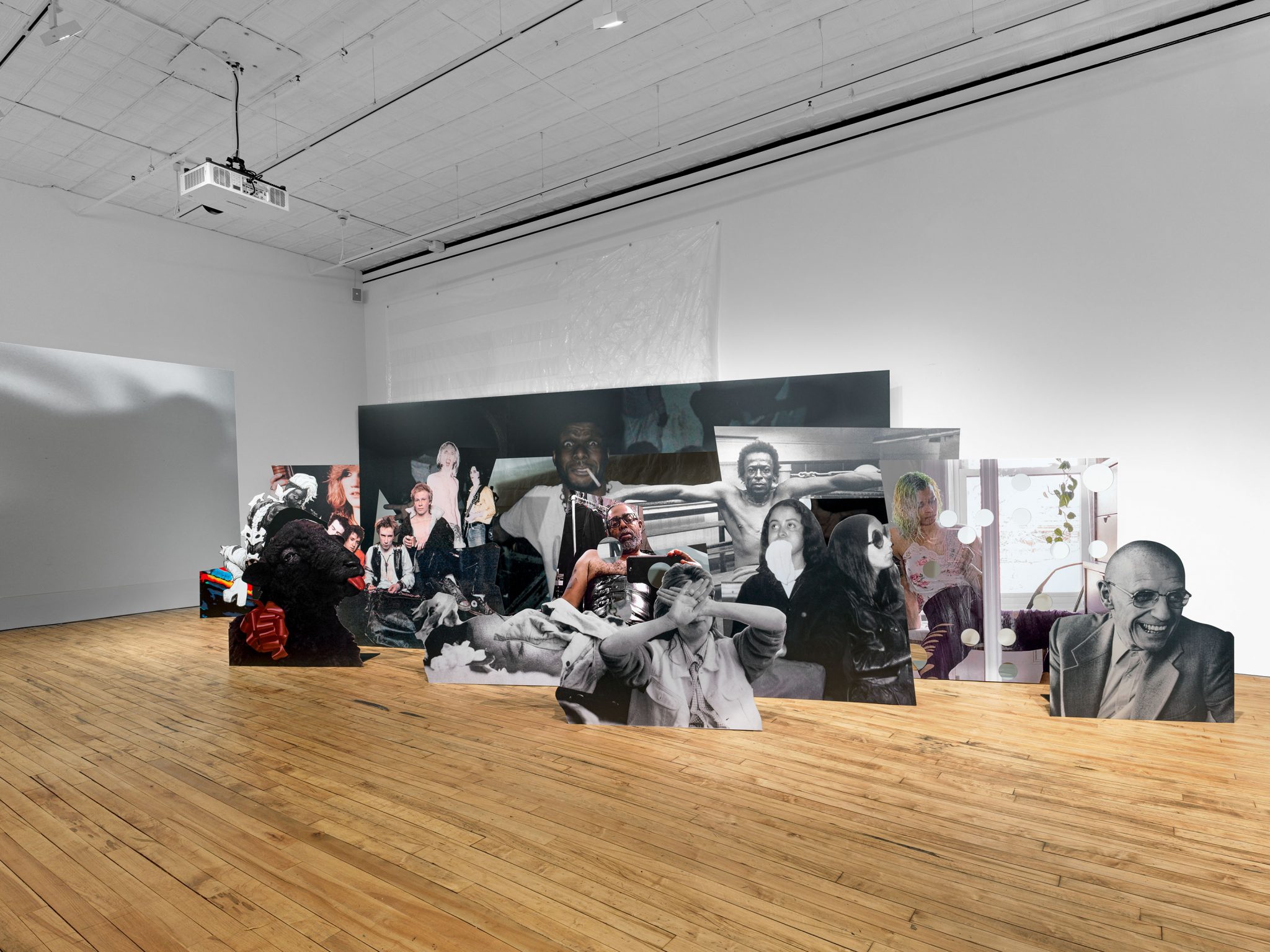BLACK POWER TOOL AND DIE TRYNIG at 52 Walker, New York takes on the charged proximity of Blackness, power and mortality
The confrontation is immediate and unmitigated: setting foot in Arthur Jafa’s exhibition, visitors are accosted by a massive black structure measuring 2.6 metres wide, 18.5 metres long and 3.6 metres tall, an unwieldy presence that looms over almost half of the gallery. The exterior of this architectonic sculpture – titled Picture Unit (Structures) II (all works 2024) – evokes a minimalist sculpture: its sleek mirrored acrylic facade is one of hard edges and impenetrable, reduced form. But the inside of the sculpture is a pictorial maelstrom. Openings at either end suck viewers into a literal labyrinth of images – blown up and displayed sequentially – that index a whiplashing sweep of heterogeneous people and places: as we meander through the maze’s twists and turns, our eye moves from a blurred picture of victims slaughtered by Charles Manson, to Arthur Rhames riffing on the guitar, to pole dancers at Atlanta’s Magic City strip club, to a memorial for those killed in the Rwandan genocide. Being caught in this current of images produces a turbulent, if not terrifying, ebb and flow of feeling, the tension of which only builds as you round each corner of the maze. And the only way out of it is through.
This disturbed, indeterminate air steals into every encounter in Jafa’s exhibition: we find ourselves in the constant and unshakeable grip of artworks that elude emotional and intellectual resolution. The exhibition’s title turns on the charged proximity of Blackness, power and mortality. The works on view seem capable of knocking you over with all the loud overabundance that attends stereotypes of Black culture. Yet a sobering mood of violence and grief casts its shadow across the gallery, often overtly – like in the photo of the Manson victims – but often with a subtlety that is arguably even more discomfiting.
For example, a wall-based silkscreen titled Lateria features a pixelated black-and-white image of gospel singer Lateria Wooten, mouth wide open as she screams into a microphone. Her face is contorted into an expression that simultaneously evokes ecstasy, pain, praise and rage – epitomising the complex viscerality embedded in Black religious and musical traditions and evoking their intimate link to resistance movements. She looks like someone who might be ready to die trying for the love and salvation that gospel music promises.

The mournful and ferocious beauty of Black music is more obviously summoned in LOML (52 Walker Version), an hour-long film installation commemorating Jafa’s beloved friend, the late critic Greg Tate. Far from a typical elegy, the video does not feature images of Tate himself: instead it presents a thread of footage that includes tornadoes, Jafa himself and Black performers from Michael Jackson to a group of TikTok dancers. Intermittently, the film drifts into a blurred black-and-white abstraction, suspending us in a lull of visual quiet and contemplation. The score samples from ambient instrumentalism, soul and rap – at times overlapping different genres at once: it is a cacophonous outpouring redolent of the instability of grief itself.
The crushing intensity of the work in this presentation picks up the cadence of other moments in Jafa’s film practice, which is known for its unsettling juxtapositions of images mined from a dizzying array of sources with explicit and furtive links to Black culture. Here, this strategy is transmuted into intransigently in-your-face sculptures like Picture Unit (Structures) II and Large Array II. In the latter, Jafa assembles an iconic crowd of larger-than-lifesize Cady Noland-esque cutout figures, among which we recognise Miles Davis, Michel Foucault, Adrian Piper, the Sex Pistols and the artist himself. Many of the figures in Large Array II don’t obviously relate to Black people. For Jafa, their presence is – put simply – visually interesting and beautiful. Rather than pointing to any neat idea of who or what represents Black culture, the work intimates Blackness in how it presents these images: they are joined through incoherence and collision, through dense contradictions that forcefully evoke the complex alterity and discomfort of Black aesthetics.
Nearby, in his ‘rail sculptures’, Jafa pushes beyond representational images and pivots towards found objects, including traffic and construction materials, to evoke his idea of Black aesthetics. In Boundary 3, three plastic traffic bollards protrude from the wall in a stacked sequence redolent of Donald Judd. They bear all the dirt and marks of abuse that come from their previous life in the busy street. They signify an ontological register that, like Blackness, is deemed fungible and degraded. In Jafa’s hands, these found objects rhyme with the eerie violence that pulses from the found images and footage elsewhere in the gallery. Together, they suggest an abject and alienated political sensibility, a Blackness and power that is at once strikingly obtrusive and discreetly lingering.
BLACK POWER TOOL AND DIE TRYNIG at 52 Walker, New York, through 1 June
